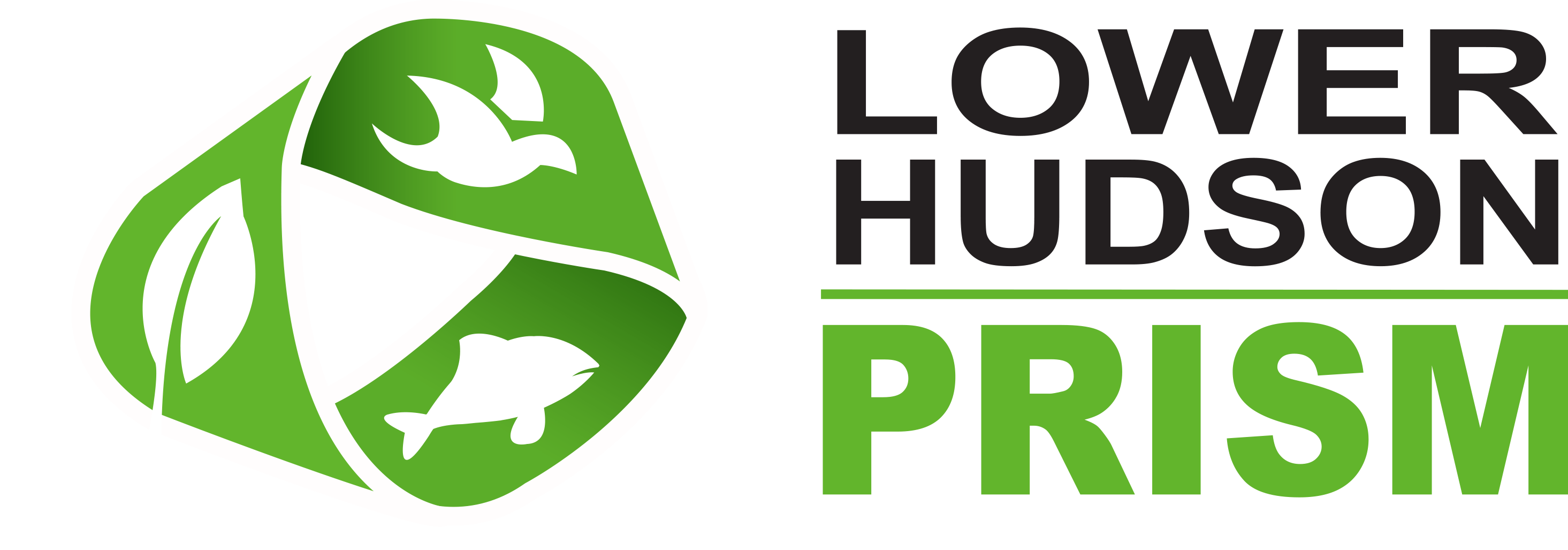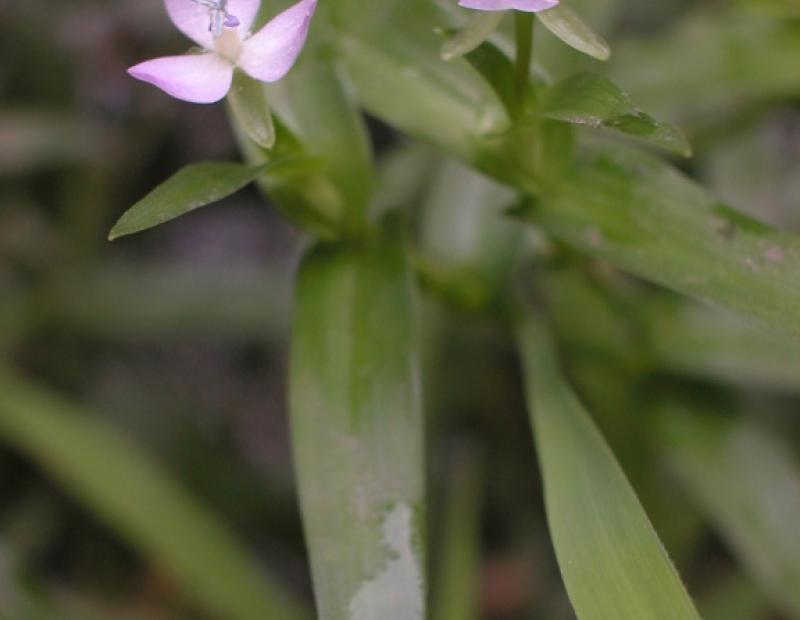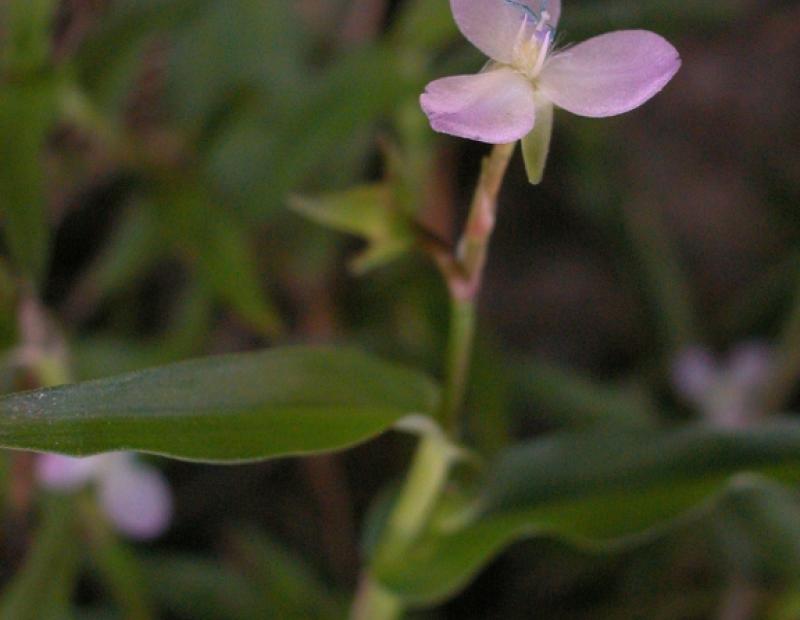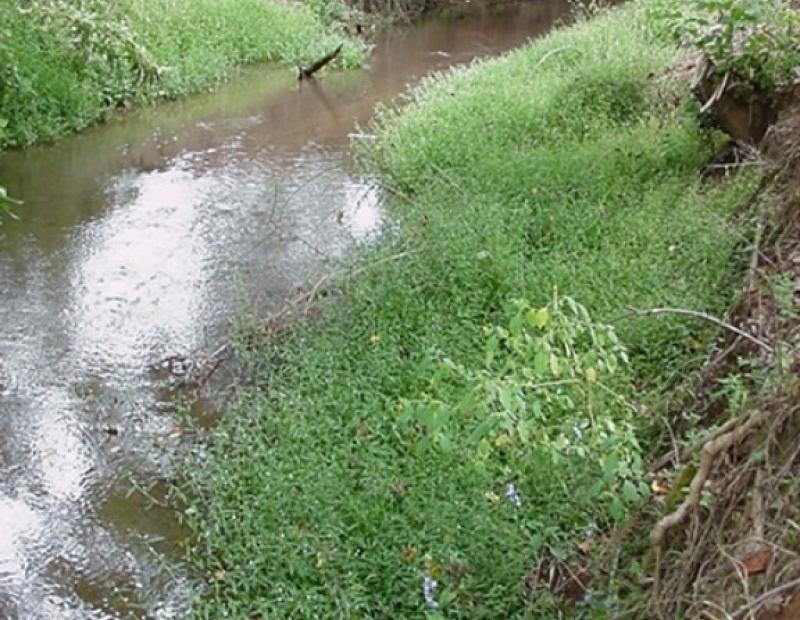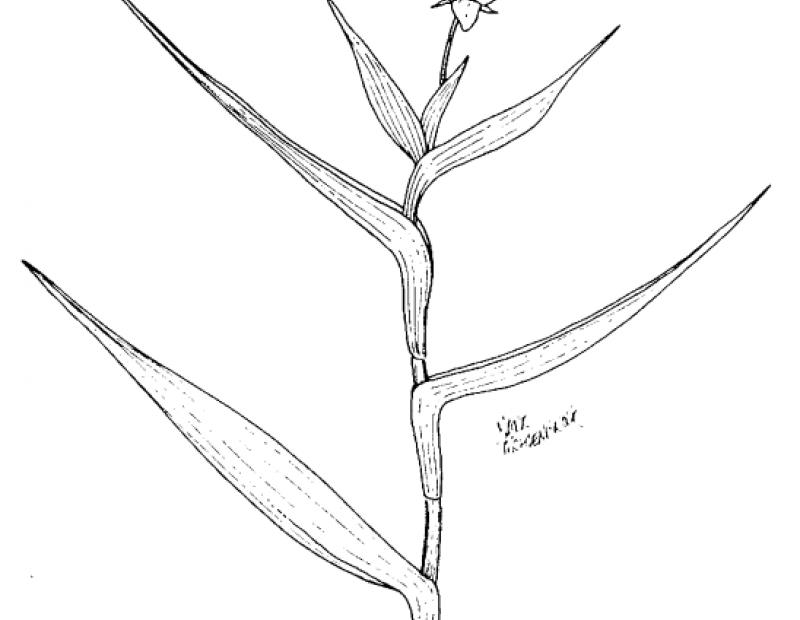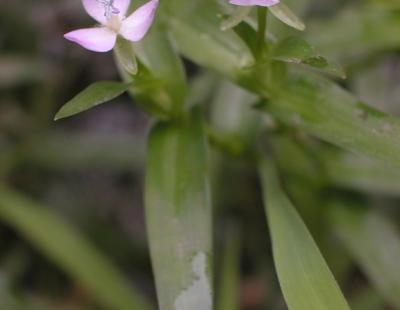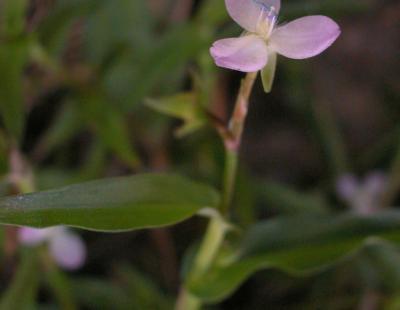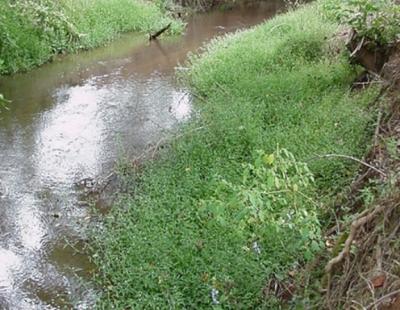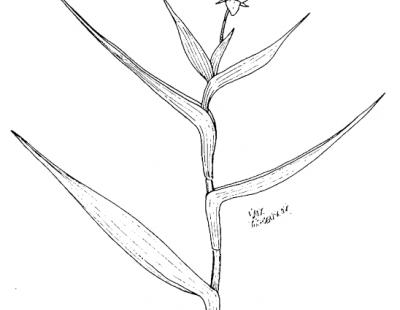Vertical Tabs
- Marsh dewflower is a member of the Spiderwort family (Commelinaceae).
- A member of the spiderwort family (Commelinaceae), Marsh dewflower is an annual, emergent plant with weak, succulent stems and small, pink, fall-blooming three petaled flowers characteristic of the family. (4)
Leaves
Leaves are alternately arranged, lance-shaped and up to three inches in length. (4)
Flowers
Flowers are small, pale pink to pale purple to white, three petaled and bloom in the fall. Flowers can be arranged singly or in small clusters at the ends of stems or in the leaf axils. (2)
Marsh dewflower is an aggressive invader of marshes, wetlands, ponds and stream edges. Capable of traveling great distances via waterfowl, this species can establish new colonies from plant stem fragments and seeds. Dense aggregations of Marsh dewflower can shade out plants growing below it, thereby altering the diversity of the communities it invades. Furthermore, the thick vegetative mats formed by large infestations can reduce water flow and stabilize sediments, causing a cascade of environmental and ecological changes. (9)
Biological Control
There is no biological control agent currently in use against this species.
Manual or Mechanical Control
Pulling / Digging Up: Not advisable. Fragmented stems are easily dispersed and resprout, forming new colonies. (9)
Mowing: Not applicable
Girdling: Not applicable
Prescribed Fire: No information available
Prescribed Grazing: Not applicable
Soil Tilling: Not applicable
Mulching: No information available
Solarization: No information available
Hot Foam Spray: No applicable
Chemical Control
The pesticide application rates and usage herein are recommendations based on research and interviews with land managers. When considering the use of pesticides, it is your responsibility to fully understand the laws, regulations and best practices required to apply pesticides in a responsible manner. At times, the pest you seek to treat may not be on a pesticide label, requiring a 2ee exemption from NYSDEC. Always thoroughly read the label of any pesticide and consult the NYSDEC or a licensed pesticide applicator with questions.
Foliar Spray: A wetland safe 2-3% solution of glyphosate is effective at managing populations of Marsh dewflower. Treatment should be performed prior to fruiting/seed set. Follow up treatment may be necessary in subsequent years. (11)
Cut Stump: Not applicable
Basal Bark: Not applicable
Stem Injection: Not applicable
Pre-Emergent Spray: Not applicable
General management overview and recommendation
As with any other invasive infestation, large occurrences of Marsh dewflower are best managed via a combination of mechanical and chemical means. Small seedlings or outlying plants can be hand pulled but care must be taken to remove all plant material. Dense patches must be sprayed to attain good control. All managed infestations should be monitored to prevent reinvasion from nearby populations, or re-sprouting of vestige fragments. Any new occurrences can be sprayed.
Post treatment monitoring
Any infestations managed by chemical means must be revisited in 2-3 weeks to check for treatment efficacy. Follow up spot treatments may be necessary for at least one year after initial treatment.
Disposal Methods
Any pulled for fragmented plant material must be bagged and disposed of in a landfill or thoroughly dried and composted.
REFERENCES
- https://www.dec.ny.gov/docs/lands_forests_pdf/isprohibitedplants2.pdf
- http://mdinvasives.org/iotm/oct-2011/
- https://plants.usda.gov/core/profile?symbol=MUKE
- https://articles.extension.org/pages/65811/murdannia-keisak-marsh-dewflower
- https://gobotany.newenglandwild.org/species/commelina/communis/
- http://www.phytoneuron.net/2013Phytoneuron/93PhytoN-Murdannia.pdf
- https://www.jstor.org/stable/4033557?seq=1#page_scan_tab_contents
- http://www.dcr.virginia.gov/natural-heritage/document/fsmuke.pdf
- http://explorer.natureserve.org/servlet/NatureServe?searchName=Murdannia...
- Dunn, C. P. & R. R. Sharitz. 1991. Population structure, biomass allocation, and phenotypic plasticity in Murdannia keisak (Commelinaceae). American J. Botany. 78(12):1712-1723.
- https://wiki.bugwood.org/Murdannia_keisak/NJ#Control_Recommendations_-_t...
